Nike has been a trailblazer in football since its early days, offering quality gear with impressive marketing campaigns and brand recognition. For decades, Nike has been outfitting top football clubs, teams, and players, becoming synonymous with football culture and iconic designs that have become fan favorites, like the Total 90 segment of the early 2000s.
So, how do you stay safe and avoid buying a fake Nike football shirt?
Check the security tags
Nike security tags are found either on the front of a football shirt, or on the inside seam close to the wash labels. Not all teams and seasons have security tags, but the majority of shirts after the year 2000 should have these present. These are a great way to find a fake – look for spelling mistakes and poor quality stitching.
Since authentic shirts have completely unique security codes, it is very difficult to determine authenticity from these digits unless you know exactly what to look for. A great tool to check the security codes is the KitLegit app.
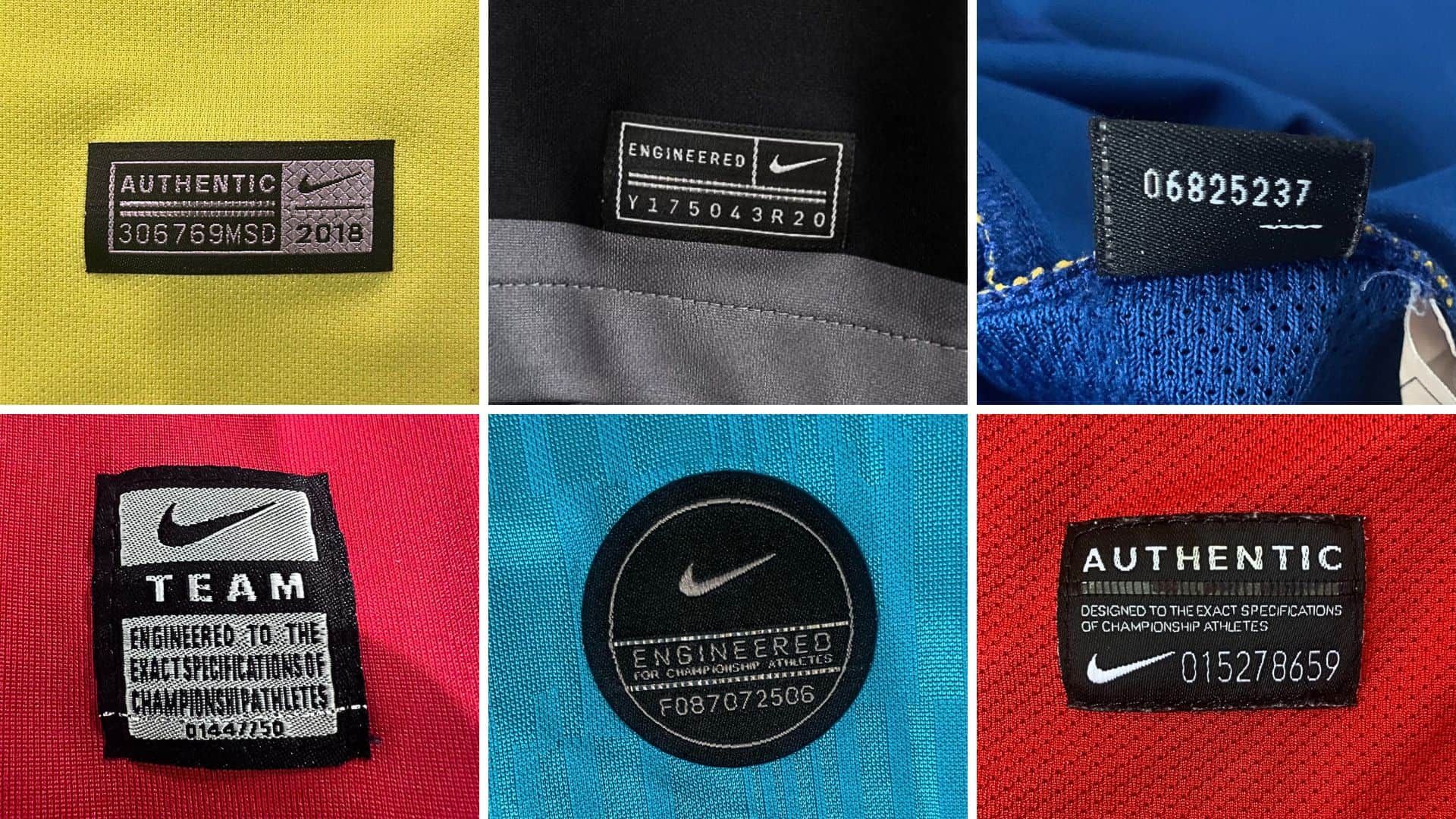
Check the style code labels
Style code labels are found in most modern shirts (post-2000) just under the care label. This usually shows some great information including the season, size, style code and UPC barcode. Googling the style code is a great way to see if the shirt matches other items found on the web, while the other digits on this label are also great ways to see if the information is a match.
Many counterfeiters use the same label for many different shirts, often resulting in a mismatch of information.
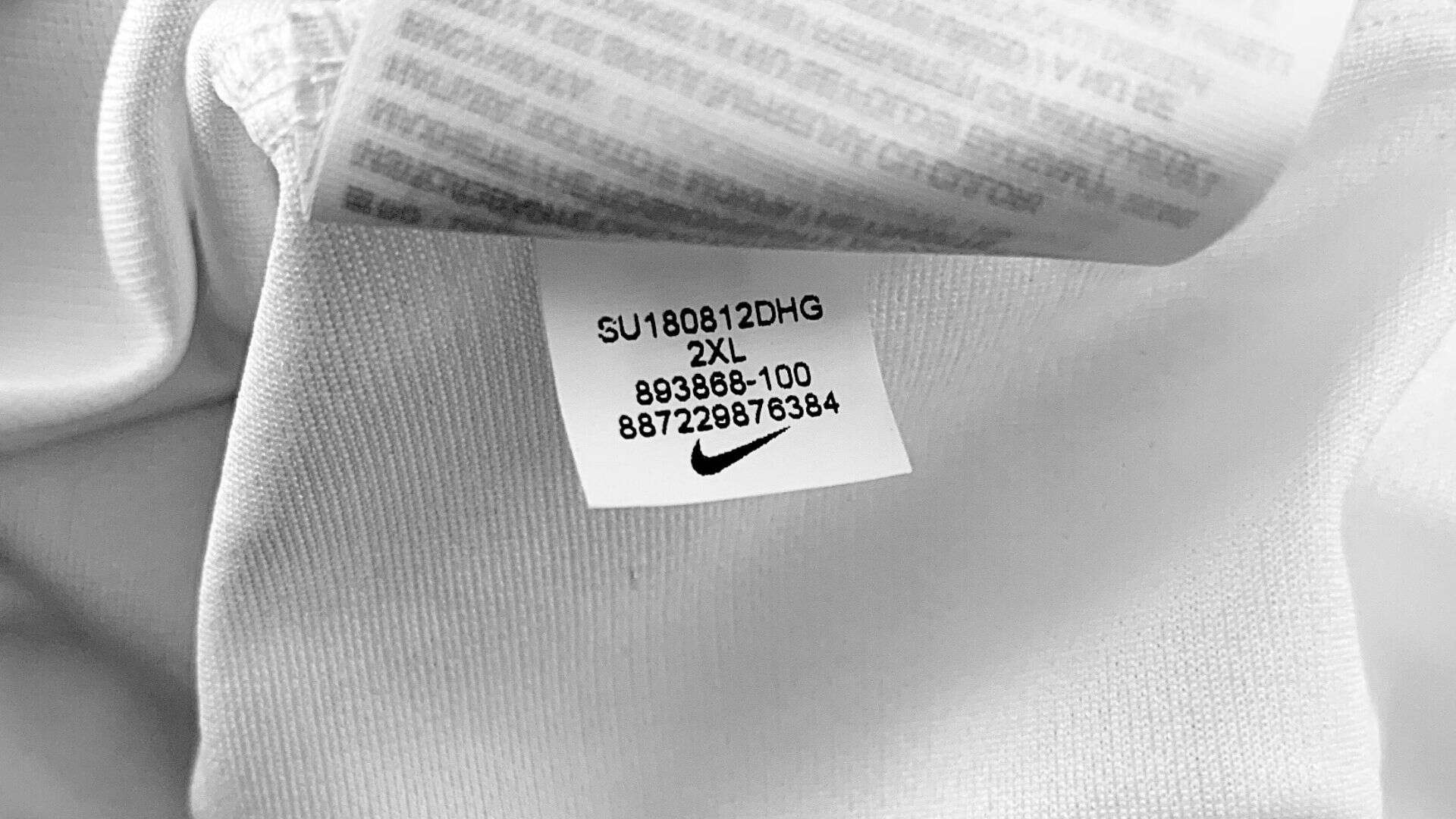
Swing tag details
Genuine Nike swing tags will reference the specific team or country, while fakes often use generic terms and may have spelling errors present. There will usually also be a reference to the style code found on the style code label tag as well as the UPC barcode. Be sure to also check that the UPC barcode is legitimate and a sticker, not simply printed on to the cardboard to ‘look legit’.
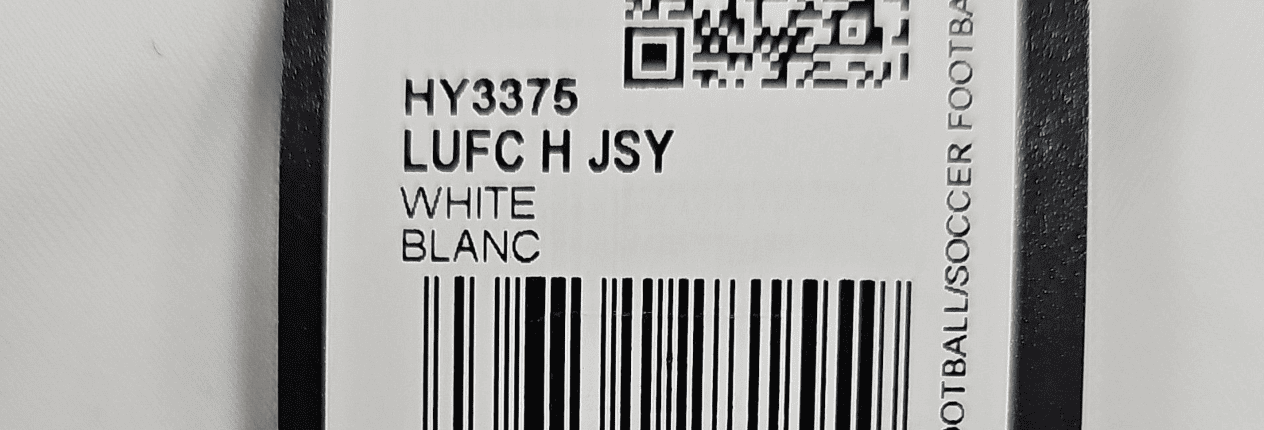
Inspect the care label
The care label is typically located inside the shirt, near the waist area. Its primary function is to provide consumers with specific instructions on how to care for their Nike football shirt. However, it also serves as a useful tool for identifying counterfeit products.
First, ensure that the country of manufacture is listed on this label, as this is a legal requirement. If you’re particularly savvy, you can verify that this matches the actual country of manufacture for the specific shirt and season.
Additionally, examine the label for any spelling errors or inconsistencies. Counterfeiters often overlook these details, making them a significant indicator when trying to spot a fake football shirt.
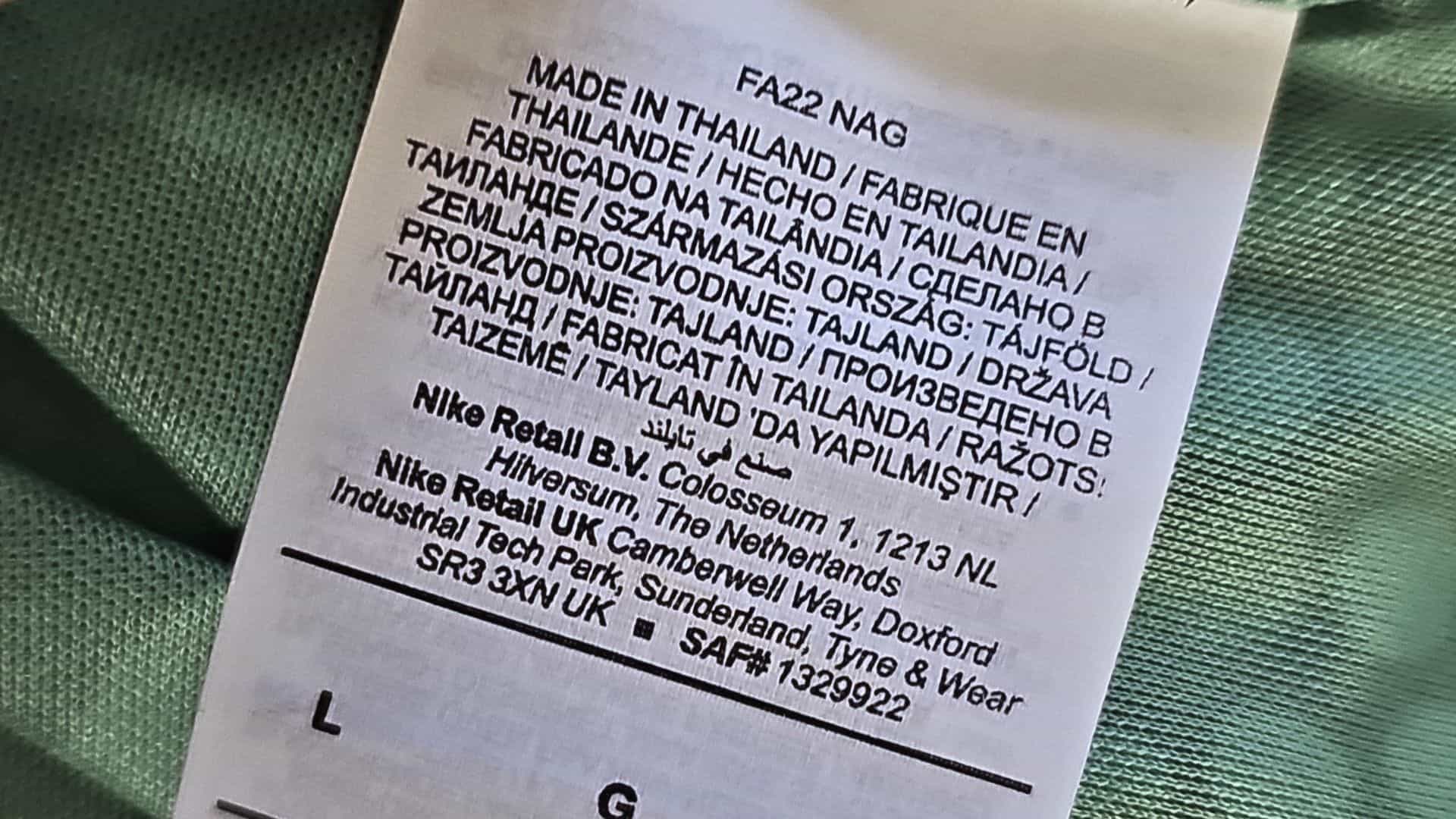
Check the logos, crest and stitching
Counterfeit jerseys often reveal themselves through small flaws. Common mistakes include incorrect stitching, typeface issues, and misshapen stripes. For instance, a fake Nike shirt might have incorrect colors or inconsistent patterns, which are clear signs of a counterfeit.
Additionally, examine the overall stitching and placement. Check if the crest is correctly positioned and if the stitching appears professional. Also, consider the sizing—does a medium fit like a true medium?
While these assessments can be subjective, when combined with the aforementioned indicators, they generally provide a reliable way to determine the authenticity of a football shirt.
Look for other red flags
When assessing the authenticity of a Nike football shirt, consider factors like price, source, and availability. You generally won’t find the latest season shirt for significantly less than the retail price. If it’s being sold for £12.99, this is a major red flag. If it seems too good to be true, it probably is.
If you’re buying a retro shirt, consider whether it’s likely to come brand new with tags. In most cases, this is unlikely.
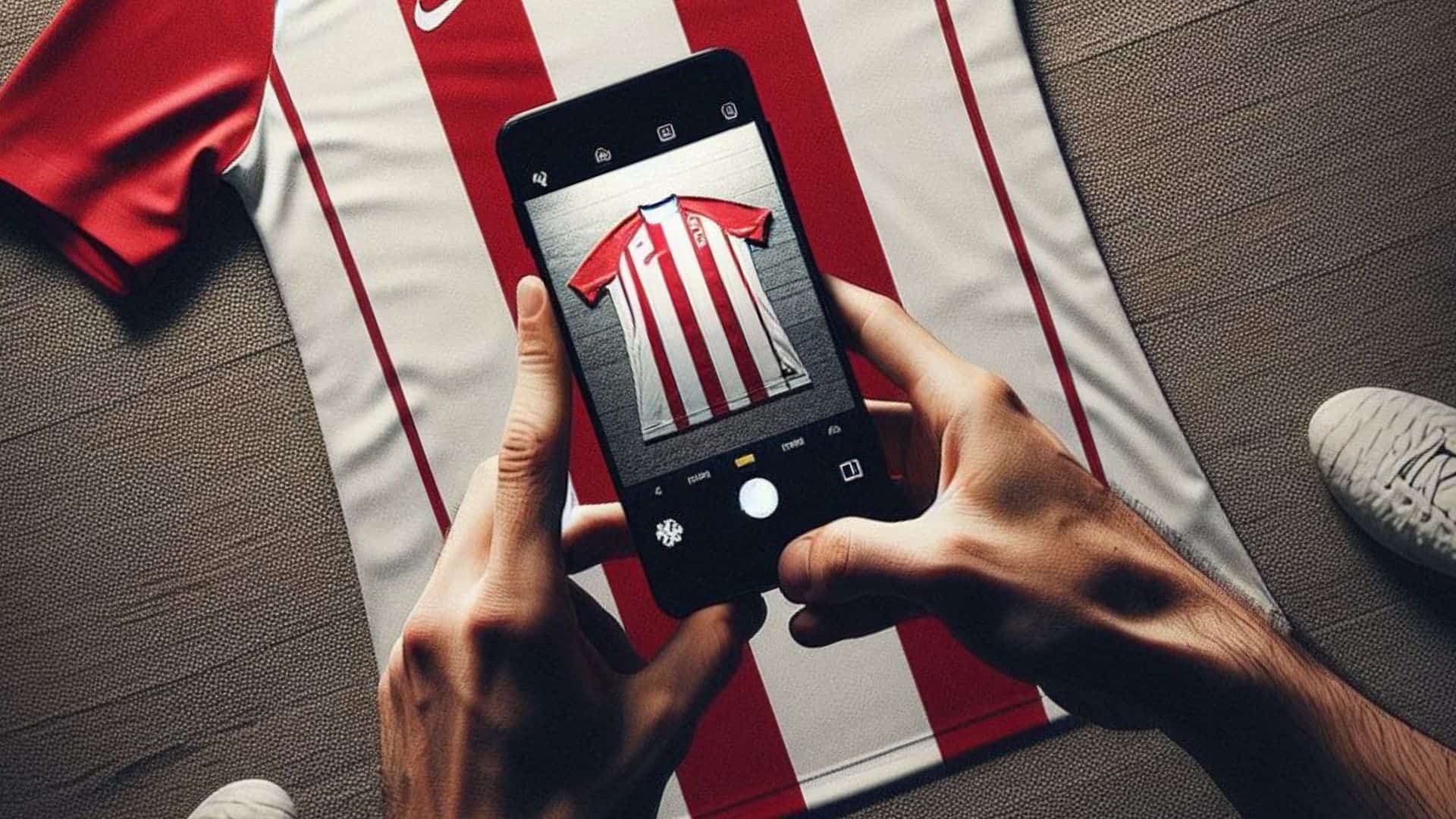
Use KitLegit
To be completely sure, try KitLegit – the authentication app for football shirts – designed to digitally detect counterfeits in seconds. Just upload or snap a few photos of your football shirt and the technology will authenticate it for you.




